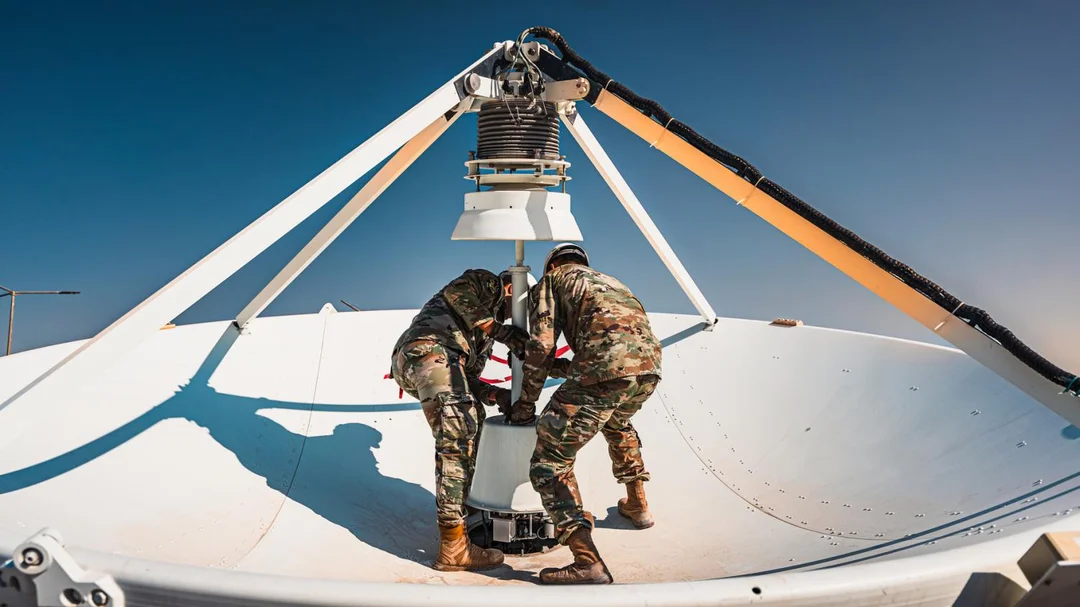
Space Force Focuses on Space Superiority Amid Growing Concerns Over Rival Actions
The United States military is increasingly emphasizing the importance of space superiority as a prerequisite for battlefield success. This shift in rhetoric reflects a broader transformation in U.S. space strategy, viewing space as a dynamic and contested domain.
Gen. Chance Saltzman, the Space Force’s chief of space operations, stated, “Space superiority is now a prerequisite for battlefield success. So regardless of whether or not you believe space superiority will win the next war, it must be recognized that we will most certainly lose without it.” He also noted that potential adversaries recognize the strategic advantage conferred by space superiority, especially regarding military forces' reliance on satellites for communication, navigation, surveillance, and missile warning.
Gen. Stephen Whiting, head of U.S. Space Command, added, “Without space-based capabilities, the joint force cannot shoot, cannot move and cannot communicate the way they need to at the speed and scale necessary to win on the modern battlefield.”
This new tone marks a departure from previous cautious language, with Lt. Gen. Shawn Bratton, the Space Force’s deputy chief of space operations, acknowledging the cultural shift toward discussing offensive capabilities in space. The Space Force recently released a blueprint, “Space Warfighting: A Framework for Planners,” outlining how U.S. forces might assert control of the orbital high ground.
This strategic shift requires tangible hardware, including systems for maneuvering, inspecting, and potentially neutralizing satellites. The Space Force is considering technologies emerging from the commercial sector, such as robotic arms, autonomous docking systems, and in-space propulsion modules. Brad Head, managing director at Elara Nova, commented on the evolving landscape, stating, “If you can get up close to something and you can touch it to fix it or refuel it, you could just as easily break it or take it somewhere else. And industry is able to do that, and is in the process of becoming able to do that. So it’s changing the world.”

Other nations' actions, particularly China and Russia, have raised concerns. For example, China's Shijian-21 spacecraft, equipped with a robotic arm, towed a dead navigation satellite. Russia has also launched “inspector satellites” that maneuver close to U.S. spacecraft. Gen. Michael Guetlein, vice chief of space operations for the Space Force, described some Chinese satellite maneuvers as “dogfighting in space.”
These developments are prompting a normalization of space as a warfighting domain, with defense officials more openly discussing the need for space weapons. As Kari Bingen of the Center for Strategic and International Studies observed, officials are “not tiptoeing around the need for space weapons” anymore.
The need for new systems that can maneuver in space is also critical. Col. Joe Roth, director of innovation and prototyping at Space Systems Command, explained, “A lot of our decisions are driven by what China and Russia are doing on orbit to negate our military capabilities in space and our commercial capabilities in space.”
Examples of emerging systems include Starfish Space’s “Otter” spacecraft and GITAI’s “inchworm robot,” which recently announced expansion plans in the U.S. Col. Bryon McClain, who oversees space domain awareness, mentioned studies are underway to identify next-generation systems that might replace current surveillance satellites.

Investors are increasingly viewing military space capabilities as a growth opportunity, with Chad Anderson of Space Capital noting, “The emerging space defense sector represents a rare growth opportunity amid current market uncertainties.”
What are the implications of this shift toward militarizing space? Will the focus on space superiority lead to an arms race in orbit? Share your thoughts in the comments below.